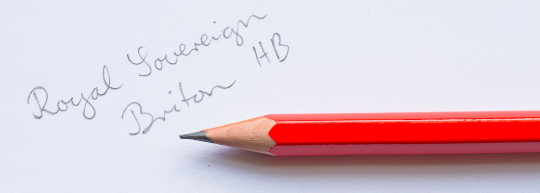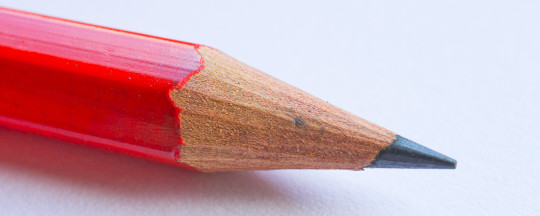Royal Sovereign Briton
I have touched on the complicated history of the Royal Sovereign Pencil Co in a previous blog post. Today I want to show another pencil made by Royal Sovereign: the Briton.
To put this pencil into context: it was made in the early 1970s, i.e. after Staedtler’s partnership with the British Royal Sovereign Pencil Company started in 1960 and after the owner or Royal Sovereign, the Charnaud family, offered Staedtler their shares in 1966. I guess there’s a chance these pencils were made on the same machines as the early Staedtler Tradition pencils shown here.
The Briton pencil was available in five different degrees: 2H (yellow), H (green), HB (red), B (light blue) and 2B (dark blue), but towards the end of the Briton line, before it was replaced by the Staedtler Tradition, only the HB and B pencils were still in production.
Just like the earliest Staedtler Tradition pencils, it has golden lettering and was pre-sharpened on the right side. This means that the text is upside down if you hold the pencil (the normal way) in your right hand.
The Briton is easy to sharpen and erase. Sharpening was tested using a Maped Metal sharpener, made in Suzhou [1]That’s one of the nice things in Chinese supermarkets: the label on the product or shelf will tell you which city a product is made in., near Shanghai. In terms of darkness, the lead produces a line similar to modern Staedtler pencils but feels a bit scratchier. It is definitely a good all-round and everyday pencil.
I would like to thank mrsnuffles for telling me which other Briton degrees were available at the time.
References
| ↑1 | That’s one of the nice things in Chinese supermarkets: the label on the product or shelf will tell you which city a product is made in. |
|---|
Royal Sovereign Briton Read More »







